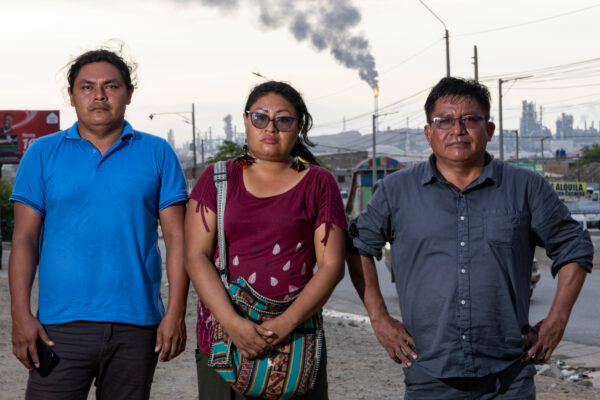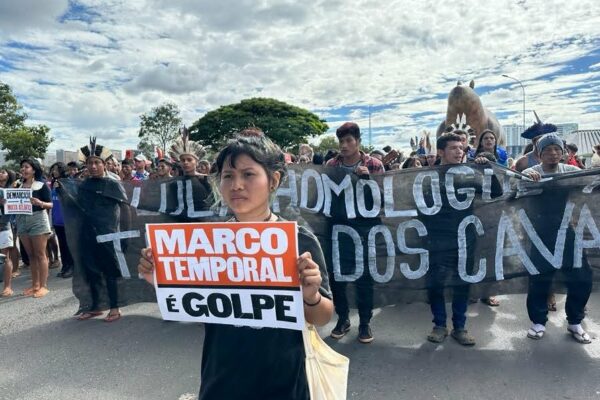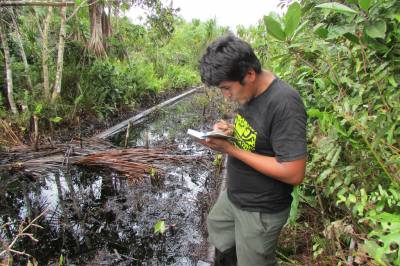
Last week Peruvian governmental authorities released test results that prove alarming levels of contamination in Peru’s largest national reserve, Pacaya Samiria. The park has been declared a “wetland of international importance” by international treaty and is part of Kukama Kukamilla indigenous territory. The contaminated waters are the source of drinking water for numerous indigenous communities along the Marañon River basin of the northern Peruvian Amazon.
Contaminants were detected in water, soil, sediment, and drinking water within and outside of the oil concession 8x operated by Pluspetrol. Soil contained hydrocarbons (TPH), as well as heavy metals such as lead, mercury, and arsenic – in some areas exceeding up to 95 times the permitted environmental quality standards for soil. The water contaminants included arsenic, zinc, mercury, and most prominently, lead.
The agencies reported several infractions by Pluspetrol, including its failure to report 49 of the 60 sites where contaminants were detected. Actions have been taken to undertake sanctions against the company.
These test results are the last in a series of investigations carried out by a government commission which looked at the two oil concessions 1AB and 8, operated by Pluspetrol, located in the northern Peruvian Amazon. The seriousness of previous results from the Pastaza, Corrientes, and Tigre river basins led the government to declare an environmental state of emergency in each respective basin.
The commission, supported and led by indigenous environmental monitors, took soil and water samples in this area in September 2013. On January 22, 2014, the various authorities presented their results to the public and a delegation of indigenous leaders who traveled to Lima to receive them. Alianza Arkana accompanied the delegation.
The indigenous response: not just the environment but also the health of the people
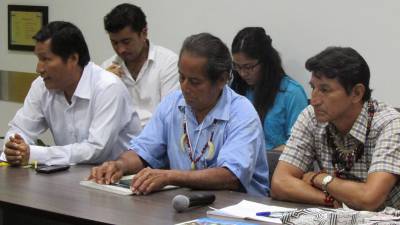
The Kukama leaders from the Marañon river basin representing two indigenous federations, ACODECOSPAT and AIDECOS, reacted with grave concern for the health of their people.
“They made it seem like it was just another news story, simply another technical report… it was very complicated and out of context,” commented indigenous leader Alfonso Lopez Tejada after the meeting. Meanwhile, the contamination proven in the tests, and reported to the indigenous leaders, directly affects the lives of their people.
The indigenous leaders also demanded better monitoring mechanisms. Alfonso Lopez further added, “We want to find ways in which the oil company assumes its responsibility.”
Sanctions threatened against Pluspetrol

Oil companies operating in Peru are obligated to report accidents, oil spills and contamination to the respective authorities. Additionally, when taking over the concession 8X from its predecessor, Petroperu in 1996, Pluspetrol legally assumed the damages left by the former. These damages were identified in an environmental management instrument, called PAC, which also elaborated a remediation plan for contaminated sites.
Out of the 60 locations analyzed within the oil concession and along the 16-kilometer pipeline which transports the crude oil to the pumping station in Saramuro on the Marañon River, only 11 had previously been declared by Pluspetrol and are included in a PAC. 49 had never been reported.
The National Service for Protected Areas (SERNANP) stated that it is in their capacity to monitor activities which affect the flora and fauna of the reserve, and demand sanctions if necessary. They announced that they have initiated an administrative court process to sanction Pluspetrol for the impacts the company has generated outside of the concession 8X, including unauthorized deforestation and infrastructure, introduction of non-native plants into the reserve, and adverse impacts on the ecosystems.
In the same vein, OSINERGMIN confirmed what ACODECOSPAT monitors and a recent Alianza Arkana report claimed – that the pipeline used by Pluspetrol is in an extremely poor state, with 80% of the tubes submerged in water, buried or placed directly on the ground, in violation of several national environmental regulations on the transport of hydrocarbons.
Specific Findings

The test results were presented at the Ministry of the Environment (MINAM), who coordinated the investigation efforts. The government authorities involved in the investigations include the National Authority of Water (ANA), the General Direction for Environmental Health (DIGESA), the Agency for Environmental Evaluation and Control (OEFA), the Supervising Body for Investment in Energy and Mines (OSINERGMIN), as well as the National Service for Protected Areas (SERNANP). Each presented their findings.
OEFA found soils that contained hydrocarbons (TPH), as well as heavy metals such as barium, cadmium, lead, mercury, and arsenic. From the 49 points that had never been declared, 23 proved the presence in excessive quantities of at least one of the above elements. There were points that exceeded 95, 47 or 22 times the permitted environmental quality standard values for soil. In the 11 cases that had earlier been declared and are included in a PAC, meaning that they were supposed to be remediated, hydrocarbon values exceeded 38, 33 and 24 times environmental quality standards among others. Moreover, the tests proved the presence of barium, cadmium and lead exceeding environmental standards.
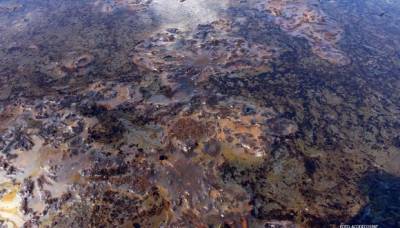
ANA examined water and sediment samples from 30 points monitored in the interior of the National Reserve and along the Marañon and Samiria River. They found contaminants such as arsenic, zinc, mercury, and others. Most prominent however is the presence of lead. 18 points proved the existence of lead and to an extent that exceeded 10 times environmental standards – a surprising level for the Marañon River, given its large size and water volume. The Marañon River is one of the largest rivers in Peru. About 100 kilometers downriver from the Pacaya Samiria National Reserve and the monitored zone, it merges with another large river of Peru, the Ucayali, to form the mighty Amazon River.
DIGESA emphasized its importance as the source of drinking water for the Kukama communities located along the river, who lack alternative drinking water sources. Having found chrome, arsenic, aluminum and coliforms in the samples, DIGESA concluded that none of the monitored communities has access to clean drinking water.
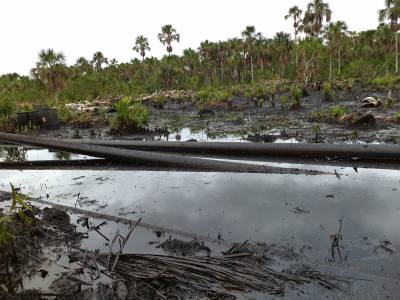
Water in the National Reserve is not exempt from contamination. Within the Lot 8X, high presence of chlorides and other derivatives from petroleum were detected. Fluorene, chrysene and pyrene – aromatic hydrocarbons present in the PAC lakes –have a horrifying impact on people’s health.
Even locations that are outside the concession 8X are affected. For example, in the lake Clemente, which is a major fishing ground for the nearby communities, arsenic in quantities above the permitted values were found. Along the oil pipeline, derivatives of petroleum were detected.
Now that the government has presented these results, the next step will be determining what to do in response. The indigenous populations in the other river basins that formed part of this commission’s investigations are still waiting for effective actions after environmental emergencies were declared in their territories.
Access each governmental agency’s presentation on the findings in the following links:
- OEFA Results Marañón
- ANA Results Marañon
- DIGESA Results Marañon
- OSINERGMIN Results Marañon
- SERNANP Results Marañón



